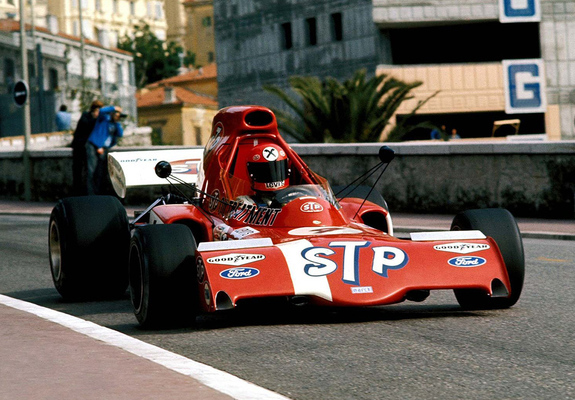March (formed by Max Mosley, Alan Rees, Graham Coaker and Robin Herd) was formed in October 1969, and had reasonable success in the 1970 and 1971 Formula 1 seasons with the 701 and 711 cars.
March started the 1972 season with the 721, which was an improvement of the 711, with over 50 changes and modifications. Herd then designed a totally new car, the 721X (72 for 1972, 1 for Formula 1 and X for experimental), which March hoped would place them amongst the top teams. While the car followed the majority of cars in using the Ford DFV 3-litre V8 engine and Hewland gearbox, there were a couple of innovations. One was the rear suspension, which featured high mounted rear springs operated by cranks and levers. Inspired by Porsche and Alfa Romeo sportscar design, the gearbox was mounted between the engine and the rear axle, instead of behind the rear axle, which was the ‘norm’ in Formula 1 at the time. In theory these two features would be very good for the car’s overall weight distribution, and lead to excellent handling.

The 721X made its debut at the non-championship Race Of Champions at Brands Hatch in March, driven by Ronnie Peterson, with the car making its World Championship debut at the Spanish Grand Prix at Jarama in May, driven again by Peterson and Niki Lauda.
Unfortunately for March, the customer Goodyear tires that March were using were designed for a conventional chassis and suspension configuration. The front tires were completely overloaded and caused all kinds of trouble in corners from complete understeer to acute oversteer, resulting in an uncompetitive car.

Both Lauda and Peterson retired in Spain, and were nowhere near the top cars in Monaco (Peterson 11th, Lauda 16th) and Belgium (Peterson 9th, Lauda 12th).
March realised that with the team locked in to using Goodyear tires, the only solution was to replace the 721X. This was done expediently by using the Formula Two chassis, modified to take the DFV engine, with the fuel capacity increased by side tanks. The 721G was more competitive, with Peterson finishing in the points at the French, German and United States Grand Prix.
Both 721Xs still survive, and the car driven by Ronnie Peterson competes in historic racing. Here is some great footage of that car lapping the Scandinavian Raceway in 2017, juxtaposed with Ronnie Peterson driving the same car at the same circuit 45 years earlier.
The following books were used as sources for this blog post:
Anthony Pritchard, “Directory of Formula One Cars: 1966-1986”, Aston Publications, England, 1986, p. 142
David Hodges, “A-Z of Formula Racing Cars”, Bay View Books, England, 1990, p. 160-161